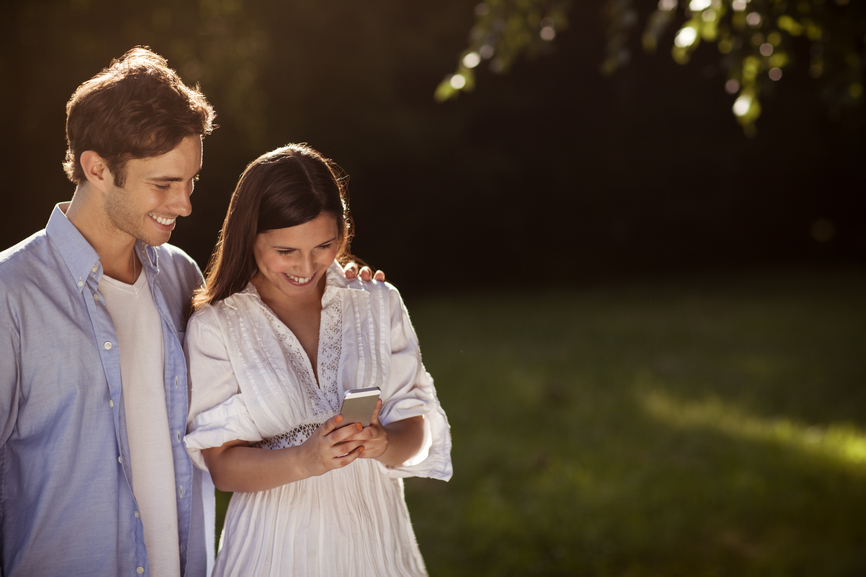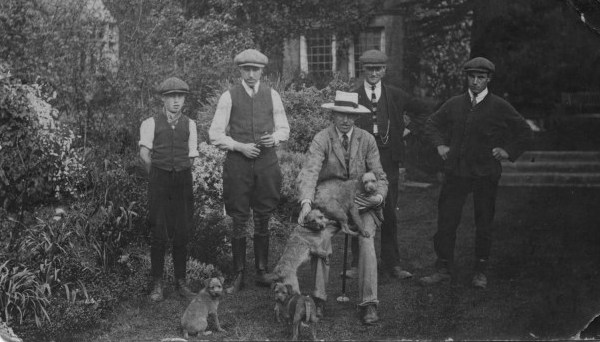Why Multimedia Guides are Often Not the Answer
Multimedia guides are all the rage. But that doesn’t mean they’re the right interpretation solution. In fact, in most cases we think they’re the wrong choice. Here’s why.
You’re about to visit a castle, explore a gallery or investigate a museum. You’re going to scale mighty stone towers, delve into dark and dank dungeons, admire exquisite works of art, marvel at the ingenious artefacts of our ancestors. And, of course, you’ll want to spend a large amount of your time peering at a tiny video screen too.
Sounds odd when you put it like that, doesn’t it? Why would you want to spend time staring at a tiny video screen when you’re surrounded by all that wonderful heritage and culture? But you must want to do it – that can be the only explanation for the plethora of multimedia guides out there.
Look, I have no doubt the multimedia guides are popular – we’re primarily visual creatures and we’re mesmerised by moving images – but that doesn’t make them right. I’ve got 2 children and when I take them to the park, I see plenty of parents mesmerised by the screens on their smartphones when, frankly, they’d be much better off playing with their kids.
I’m not saying multimedia guides are wrong per se, I just think they’re often introduced when they’re not needed – a ‘so and so has got one, so we’ll have one’ phenomenon that doesn’t deliver the best experience for visitors. Besides, museums and heritage attractions have barely scraped the surface when it comes to the potential of audio to enhance their visitor experience.
When we approach each project, we have 2 guiding principles – ‘eyes up’ and ‘augmenting reality’. Let me explain.
‘Eyes up’ is a description of how we want visitors to explore a museum, gallery or heritage attraction – keeping their eyes up taking in the visual feast that surrounds them, rather than down, locked onto a 5 inch screen.
Augmenting reality’ is the job of interpretation – using media to enhance the sights, sounds and smells of the environment the visitor is exploring, not to replace them. Let me give you an example.
When we were approached by the National Trust’s Hidcote Manor Garden, our challenge was to help visitors to understand the history of the garden and its creator, Lawrence Johnston.
Of course, a multimedia guide would have been an option, but do we really want people to be squinting at a tiny screen when they’re exploring one of the world’s most beautiful arts and crafts gardens? That’s an emphatic ‘no’.
So we created a pure audio experience. In fact, better than that, we created a 3D audio experience using a little known audio technique called binaural sound. Because it’s recorded in the same way the brain hears, audio recorded in binaural isn’t just heard to left and right like stereo, but all around the listener. It’s an immersive, and often quite spooky, experience.
Using this technique, we brought Lawrence Johnston back to life to take visitors on a tour of his gardens and his life. Visitors felt like Johnston (played by an actor) was with them – sometimes encouraging them to follow him further into the garden, sometimes whispering conspiratorially into their ear. We also used this technique to transport visitors to different times and places – the garden in its 1930s heyday and packed with socialites, or the South African veldt on one of Johnston’s plant-hunting expeditions.
Were there visuals ? Yes – a map to guide visitors around the garden and one static archive photograph to accompany each of the six stories. But our main aim was to ensure that we were augmenting the reality – the beauty of the garden – creating an eyes up experience where Johnston’s enthusiastic descriptions enhanced what they were seeing.
That’s not to say there isn’t a place for ‘replacing reality’ sometimes too. We’ve created audio visual experiences that have been designed to stand alone – not working with their environment – because that environment was a gallery offering no other stimulus other than blank white walls and plain wooden floors. Then you have to conjure up something from nothing.
And we’ve created mobile games too – but games that encourage people to interact with the space around them, and to minimise time interacting with the screen.
But the temptation when you have a screen available is to fill it with something – and it’s then you could fall into the trap of creating content that distracts rather than enhances.
Our advice would be to think augment rather than replace. Like you and me, your visitors probably spend too much of their time looking at tiny screens. Free them up to look at something genuinely inspiring for a change.



